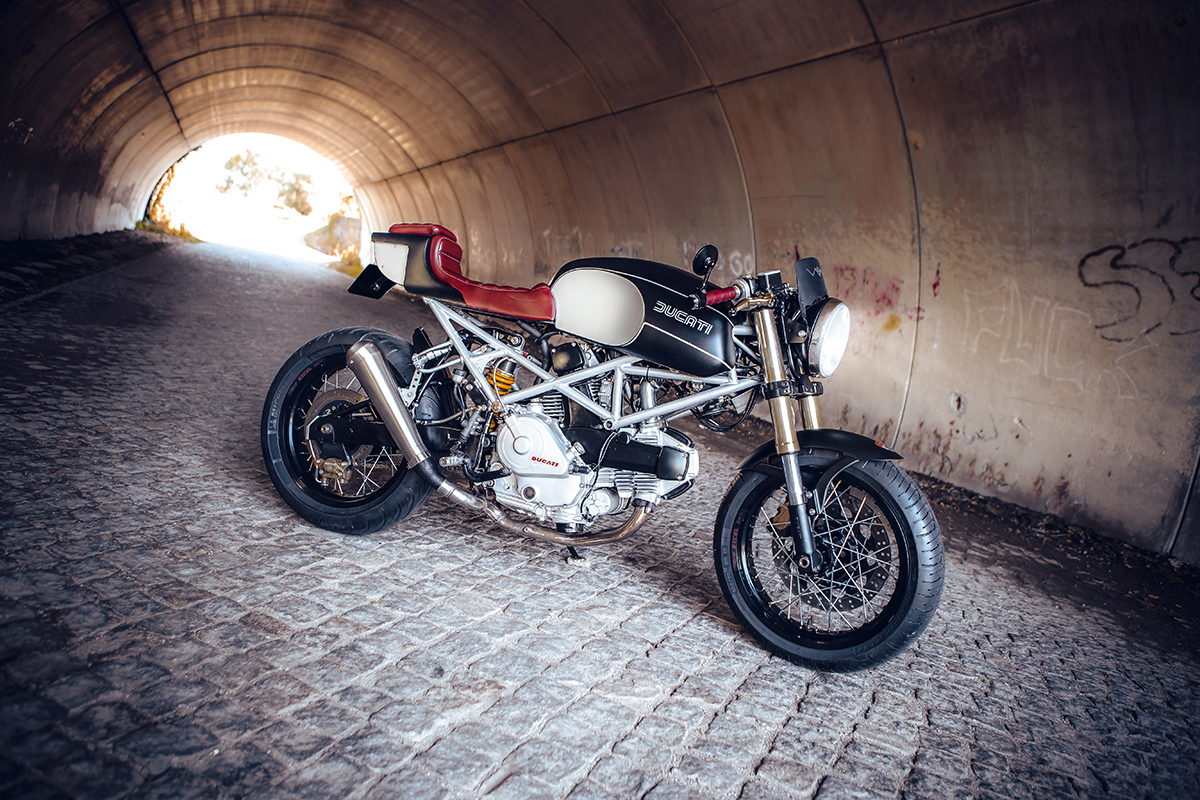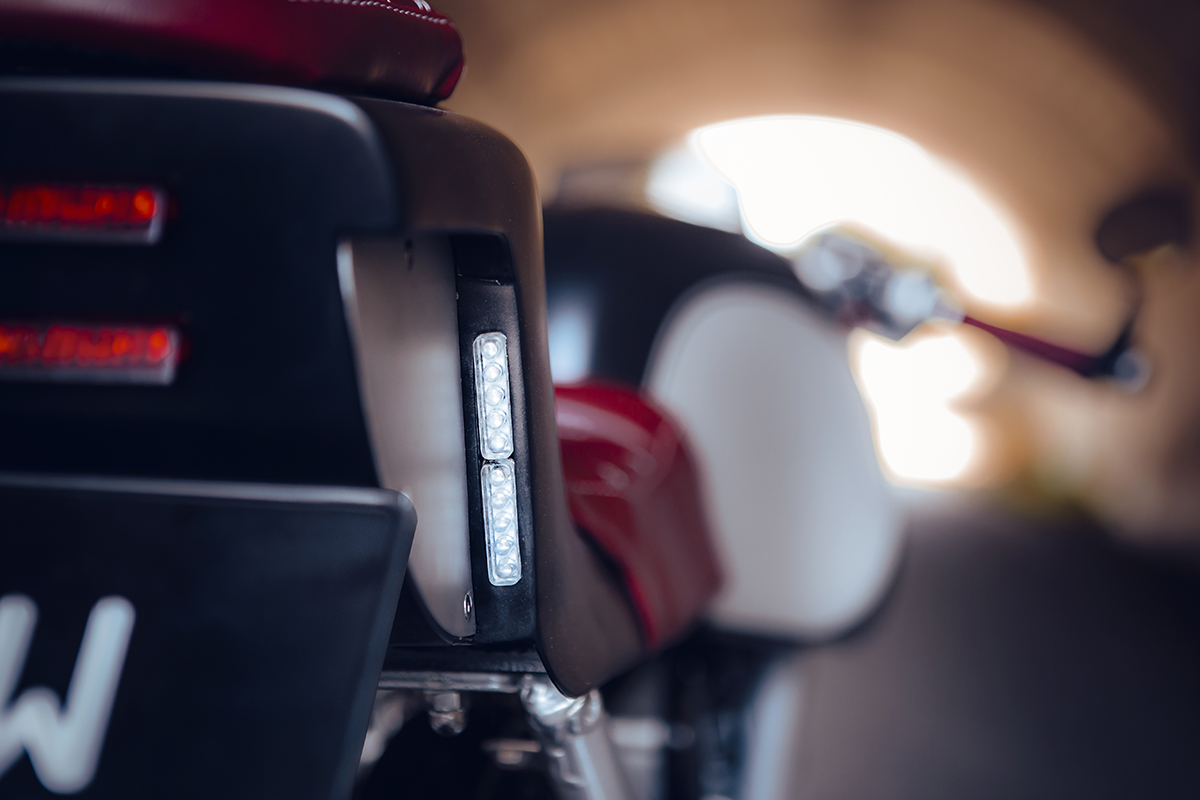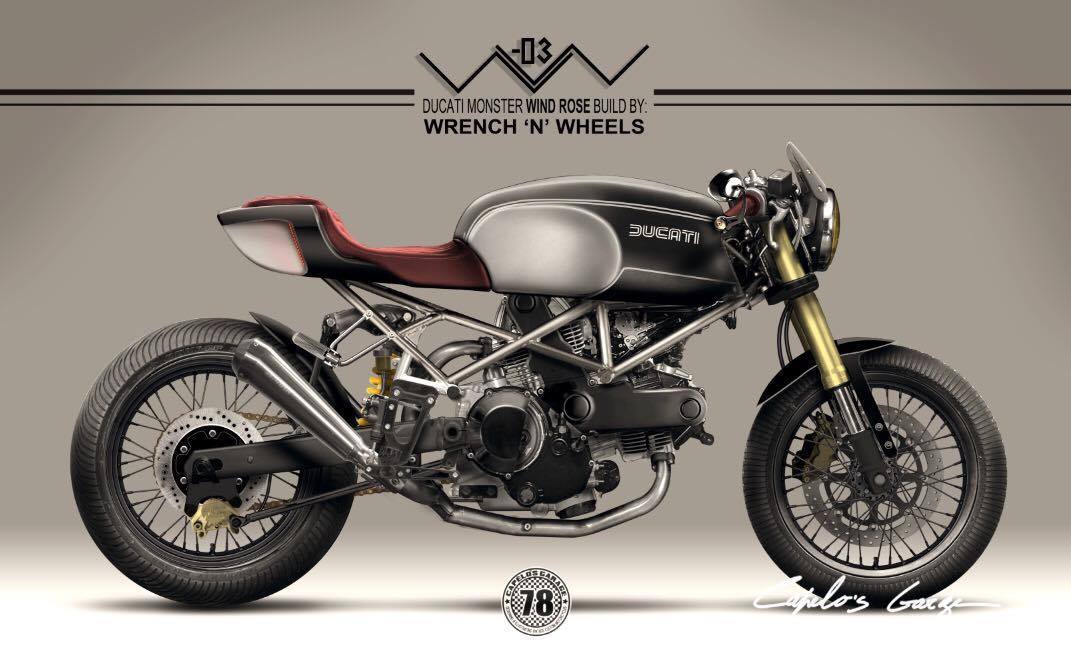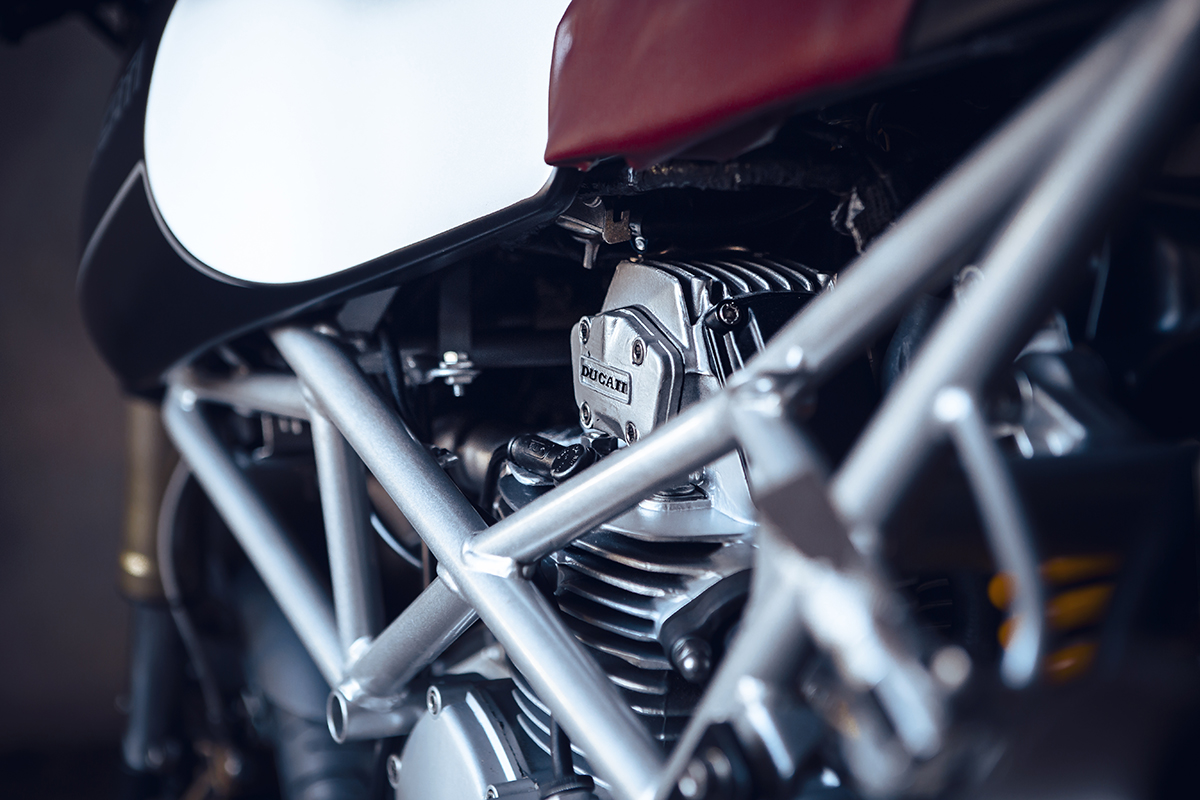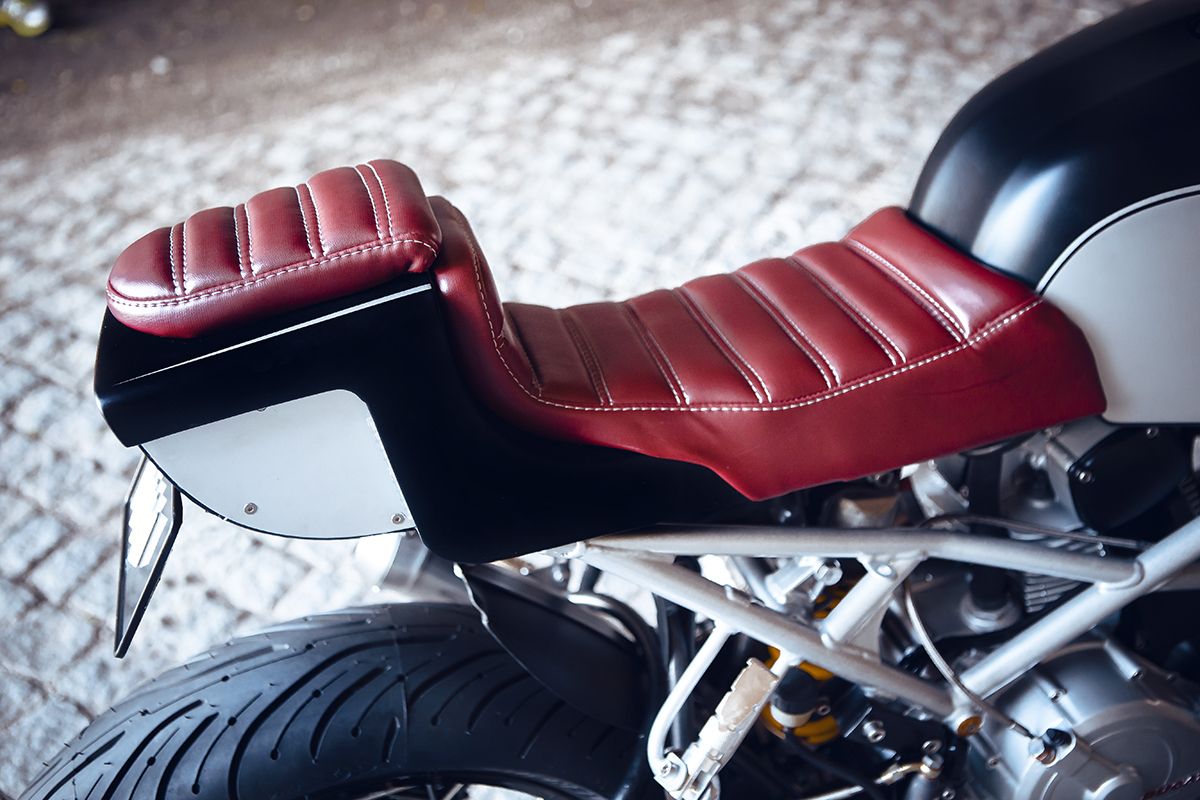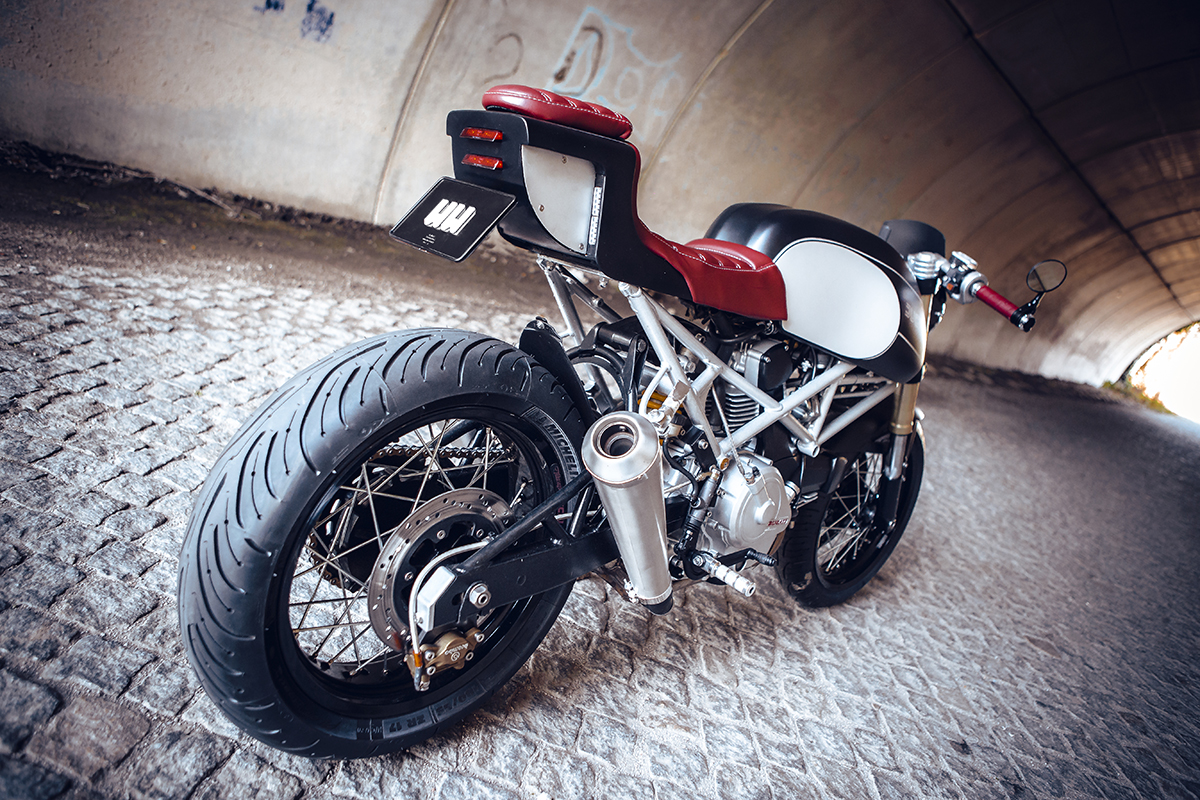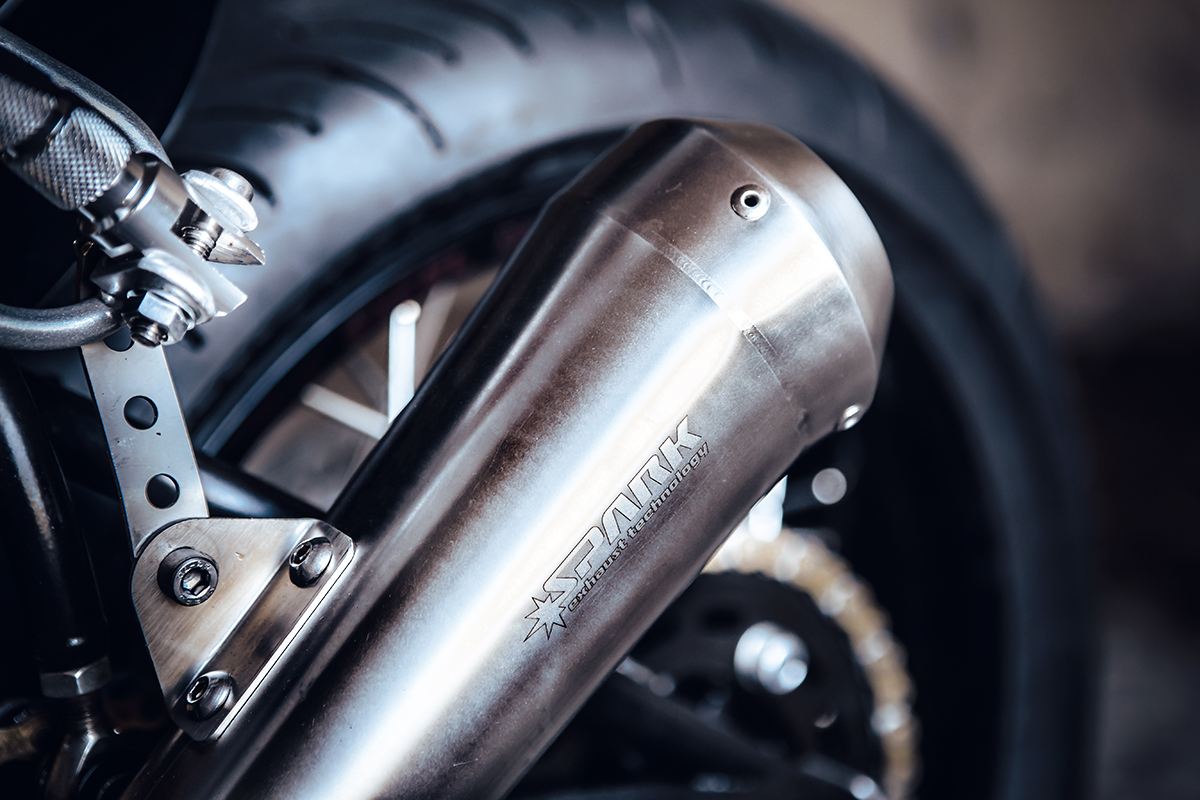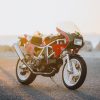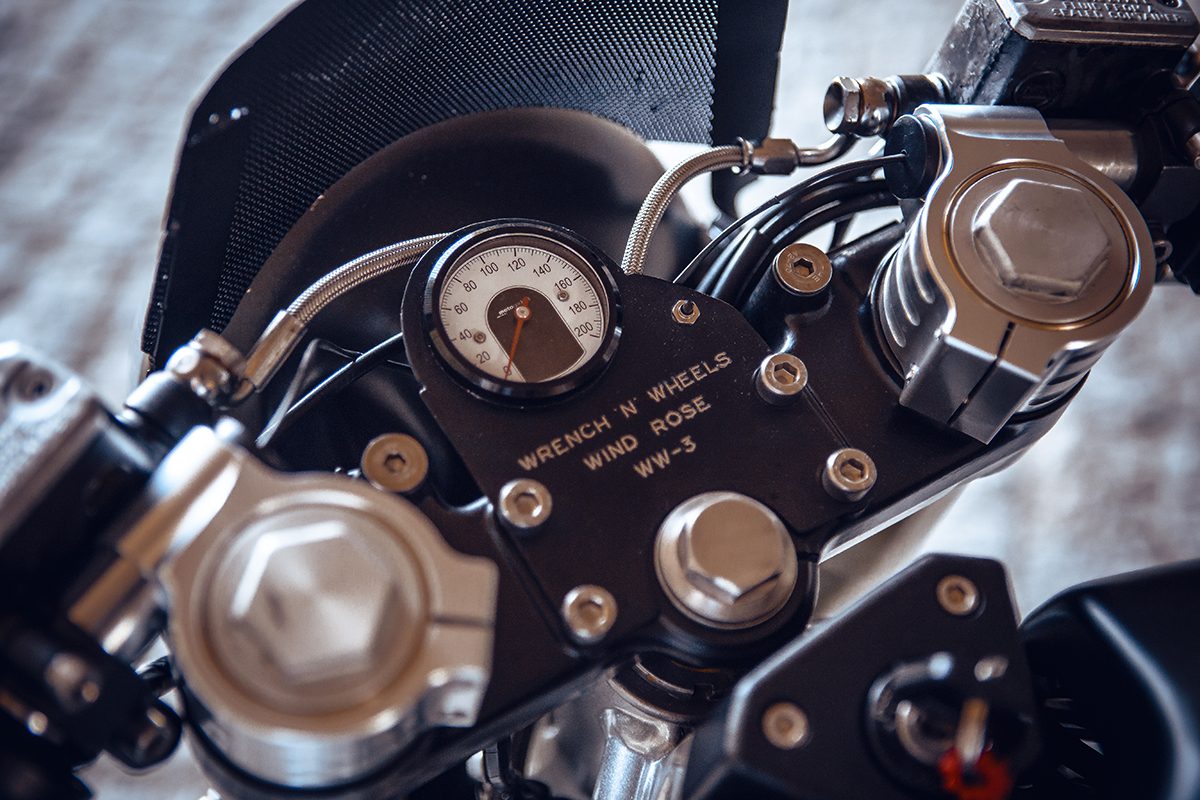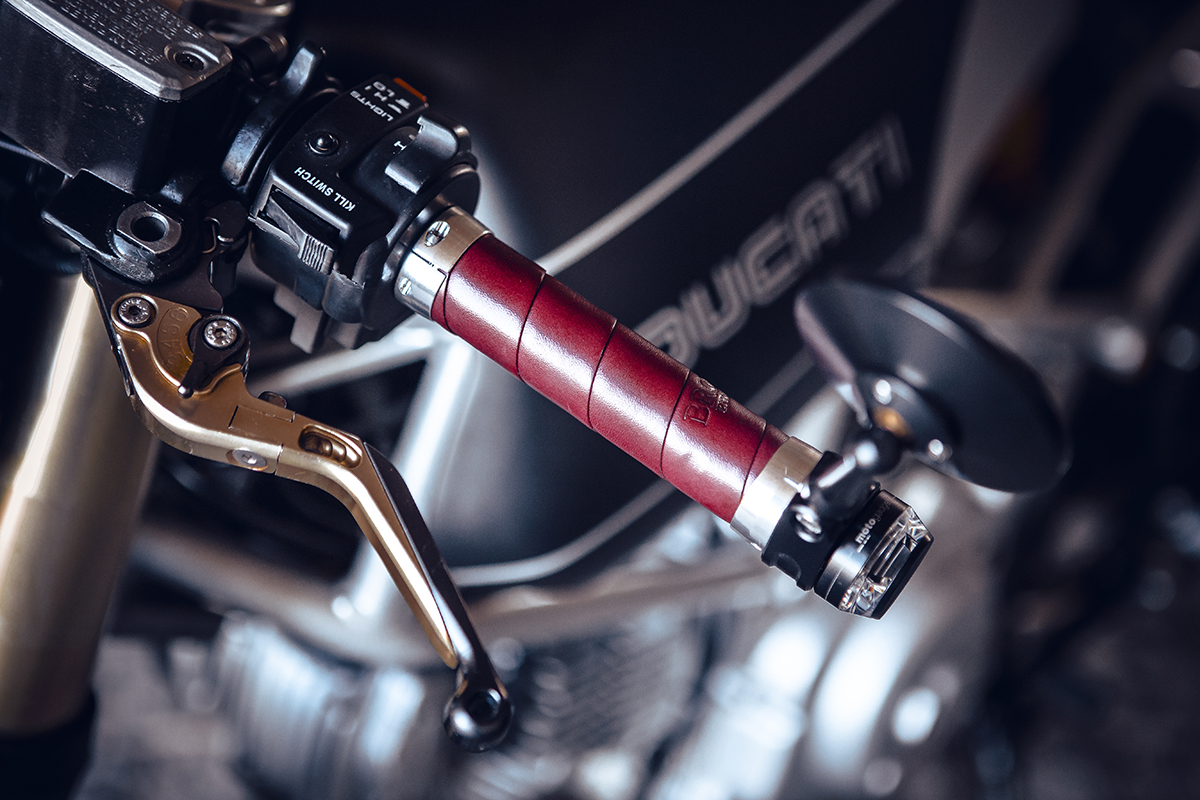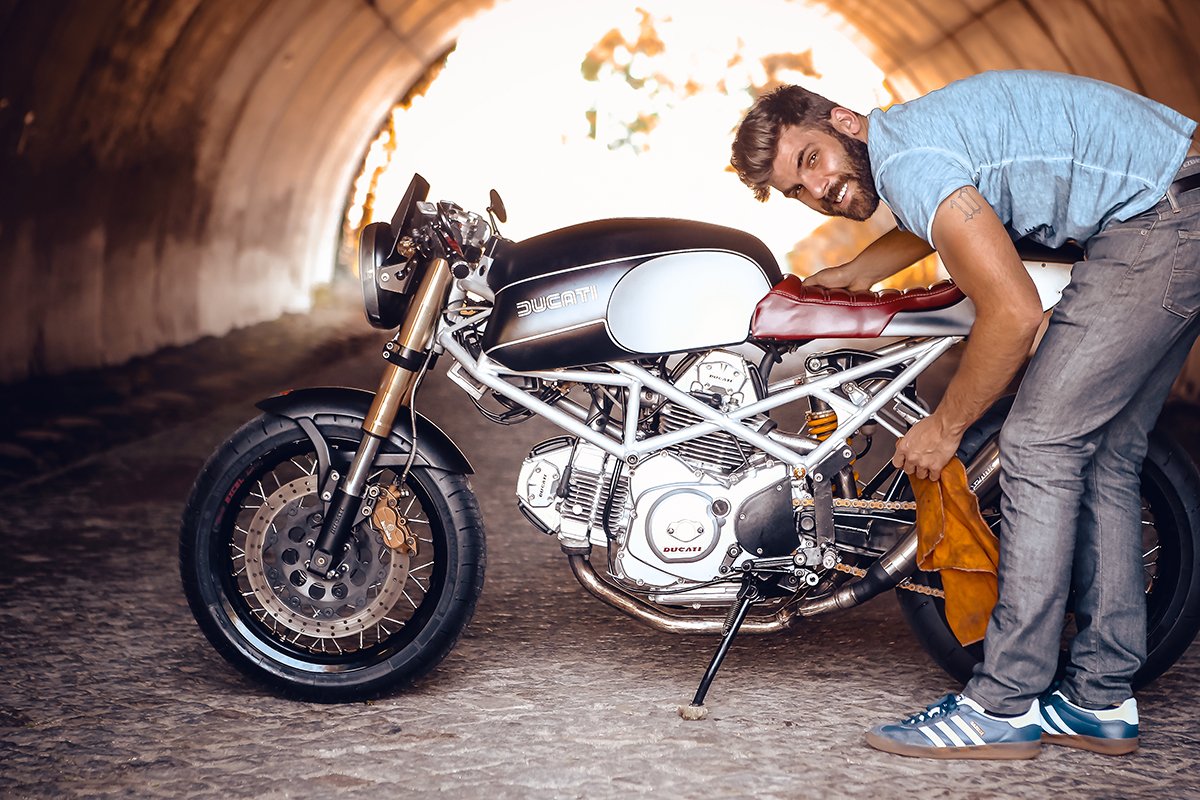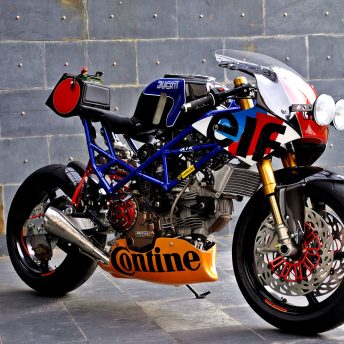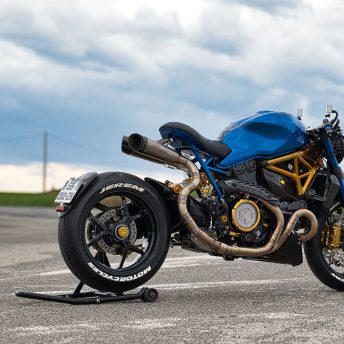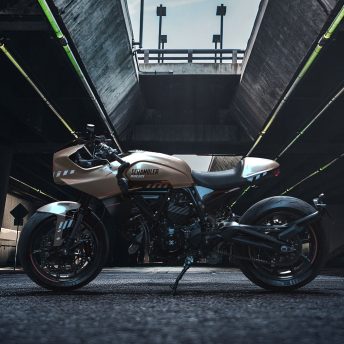Their 1996 Ducati Monster Cafe Racer may only be the third customer build the WNW team have undertaken, but the design and its execution are world class. Despite it appearance Pedro explained that getting the workshop to this point was no easy task. “The support that I initially thought I had back in 2015 did not eventuate. But, those hard times brought me strength and motivation and I soon connected with capable people and we’re fortunate to still be here today.” Pedro has named their WNW #3 Ducati Monster the ‘Wind Rose’. Inspired by 1930’s World War 2 fighter planes, in particular Bugatti’s designs, they have built upon the sound Monster platform to create a truly classic looking motorcycle.
When the customer first approached them with the prospect of the build, Pedro and his team knew they wanted to create a Ducati that would be unique amongst the plethora of custom builds done before them. “The idea behind the ‘Wind Rose’ build was to create unique details and improve aerodynamics.” says Pedro. “We wanted to make the bike more streamlined, more stable and symmetrical, like a warplane.” With their final outcome settled on, Pedro looked to his friend Nuno Capelo of ‘Capelo’s Garage‘ to help create a digital sketch of how the finished bike should appear.
Under Pedro’s direction Nuno sketched a digital illustration that embraced the best elements of Ducati’s original design. While swapping the Monster’s cast wheels for spoked rims made a significant difference to the look of the bike it was the level bone line and the bikes classic cafe racer stance that really transformed its appearance. Taking cues from Pedro’s warplane theme Nuno sketched out the bodywork that was to be grafted onto the Monsters iconic trellis frame. Recognising that a screen major changes can be made with a few simple clicks, Pedro was careful to not exceed what was capable in a reasonable timeframe or budget, eventually settling on the design pictured above.
With a digital sketch worthy of wall space in the Louvre, Pedro headed back to his workshop to begin work on the build. After tearing down the bike he sourced a Ducati GT1000 fuel tank which he mounted by modifying the original brackets on the frame. The tail section was a much harder piece of the puzzle to complete. Working alongside his father, Pedro endured many sleepless nights in order to hand form it’s sweeping lines from flat sheets of steel. Housed inside its walls are the bikes electrical components and battery and Pedro even retained the ability to carry a customer by installing a seat pad on the top of the tail. Thanks to some careful planning the trellis frame remained unmolested and a bone line was created that was almost identical to that in Nuno’s sketch.
For the spoked wheel conversion Pedro mounted matching 17 inch Excel Takasago rims to modified Yamaha XT660 hubs. Wanting to ensure the finished bike left no doubt inanyone’s mind that it would handle as it should he wrapped the rims in grippy Michelin Pilot Road 4 rubber. To expose more of their hard work they then trimmed the original fenders down and finished them in an unobtrusive satin black.
For lighting LEDs were integrated into the tail. Two horizontal strips sit at the rear for brake and running lights and 2 vertical strips were placed on its sides for a unique indicator configuration. Upfront you’ll find the original headlight re-mounted using custom brackets and a set of Motogadget bar end indicators have been installed into the clip on bars. Motogadget also supplied the bikes bar end mirrors and tiny speedometer that sits in a custom made bracket mounted to the triple trees.
When it comes to engine work, Pedro’s business partner Abilio brings his 40 years of motorcycle mechanic experience to the table. After thoroughly servicing and cleaning the 600cc L-twin Abilio tuned the engine to sing its beautiful song through a set of Spark mufflers, swept upwards keep the bike’s proportions tight. A light spattering of satin black paint on the belt, chain and valve covers helps to break up the mass of silver.
After choosing the bikes classic black and silver paint scheme, Pedro enlisted local paint shop ‘Correia Paint’ to apply a design that emphasises the the classic lines of the tank and tail. Then, to match the cherry red leather of the seat, he wrapped Brooks bicycle grip leather around the bar ends to form the Monsters handlebar grips.
Showing a level of consideration we don’t often see in builds, Pedro finalised the project by mounting a set of custom made rearsets using the carefully made measurements of the bikes owner. It’s details like this that make all the difference and the kind of thing that we know will result in us seeing many more great builds from Wrench N’ Wheels in the months to come.
Ducati’s Monster may have been the top selling naked motorcycle of all time, but it’s styling was never as classic as we’d like it to be. Unlike their now defunct Sport 1000 series the Monsters have always taken a modern design approach to appeal to the motorcycling masses. Sure the older models may now appear somewhat retro, but classic? We certainly don’t think so. Thankfully there are more and more workshops recognising the Monster platform as an appropriate base for customisation. Take the Portuguese workshop of Wrench N’ Wheels for instance. They may have only been on the scene for two short years, but Pedro Caçote and his team have done what we all hoped possible. They made a Ducati Monster look good.
